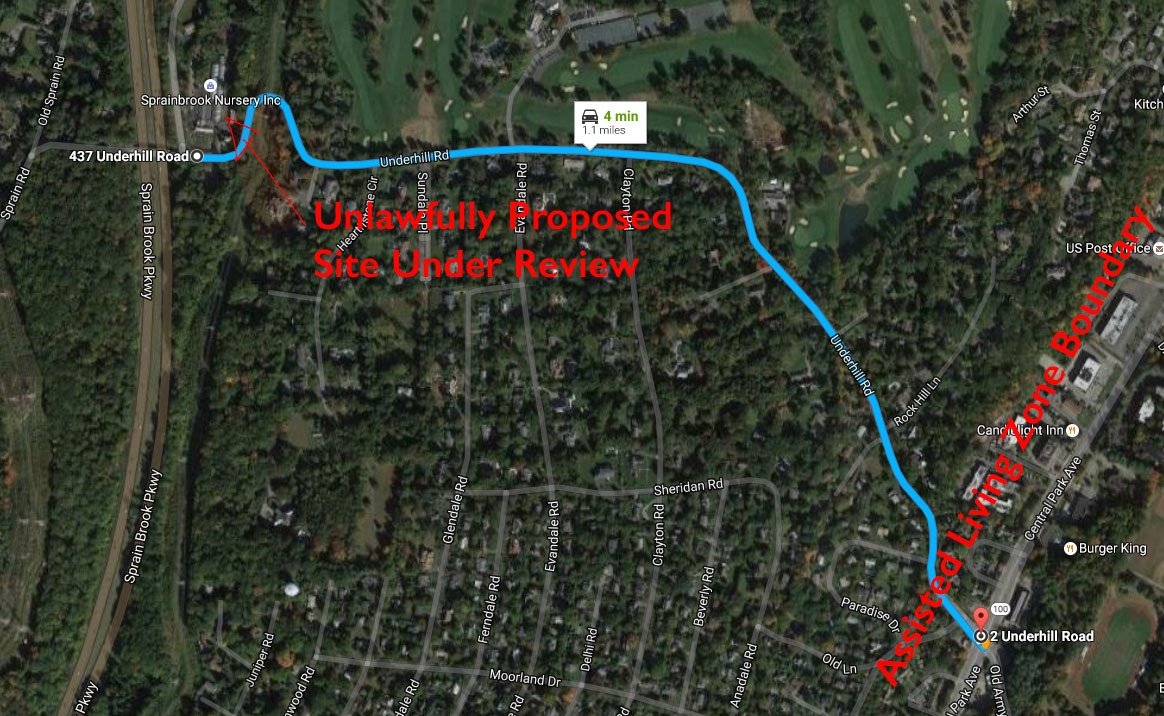Shelbourne Fiasco Illustrates Need for Edgemont-Run Governance
Edgemont’s volunteer fire commissioners spoke out against the Town’s approval of an assisted living facility development in an unsafe location, and the developer sued them for doing so. Last week, the NY State Supreme Court dismissed the developer’s lawsuit, on the ground that Edgemont’s elected officials were legally entitled to raise objections to the project.
The Town of Greenburgh’s problem-plagued handling of the proposed Shelbourne assisted living project illustrates why Edgemont residents should want to vote on whether to form their own governing body. It’s an example of how a large municipality can completely ignore the concerns of one of its smaller constituencies, with no electoral repercussions.
The background: Formation-Shelbourne has for years sought to build an assisted living facility in Edgemont at the site of the former Sprain Brook Nursery. The Greenville Fire District (GFD), Edgemont’s local fire department and EMS provider, raised concerns that the Town had ignored potential safety impacts to GFD staff. Specifically, the new facility would require more than 100 medical emergency trips per year by the GFD’s EMS workers along a steep, windy and dangerous portion of Underhill Road.
Edgemont resident and Greenville Fire District Commissioner Walter Groden explained the danger at a 2016 Zoning Board meeting, saying “The curves [on Underhill Road] are a problem. It’s a descending, sloping road with multiple curves going into a hairpin turn.”
The GFD and some residents also complained that, in approving the project, the Town ignored a key provision of its zoning code that requires assisted living facilities to be situated within 200 feet of the closest state or county road. The law further requires that the route from the facility to the nearest such state or county road (in this case, Central Avenue) must be direct and non-circuitous.
The Greenburgh Zoning Board of Appeals granted Formation-Shelbourne an unheard-of 3,000 percent variance to overcome the 200 foot distance requirement — allowing Formation-Shelbourne to construct its 60,000 square foot facility in a residential neighborhood, over a full mile from Central Avenue. In fact, the planned facility could not possibly be located in Edgemont any farther from where the law normally allows such facilities.
Then, despite the concerns raised by the GFD and the Edgemont residents, and the independent legal requirement of direct and non-circuitous access to Central Avenue, the Greenburgh Town Board granted Formation-Shelbourne a special permit to construct its facility at the bottom of a steep, double hairpin turn of a road that even the Zoning Board described as having “severe” vertical and horizontal curves.
The GFD and Edgemont residents challenged the Town’s decision in court, and a ruling is expected soon. In the meantime, Formation-Shelbourne retaliated by suing the GFD and its individual commissioners—all of whom are elected Edgemont residents who donate their time and effort to this important public service. Seeking $1 million in damages, Formation-Shelbourne claimed that the GFD and its commissioners tortiously interfered with Formation-Shelbourne’s business. Formation-Shelbourne sued the volunteer commissioners in both their official and personal capacities.
The GFD moved to dismiss Formation-Shelbourne’s lawsuit under New York’s anti-SLAPP statute (“SLAPP” stands for Strategic Lawsuit Against Public Participation). As the court explained, the anti-SLAPP law is designed “to stop meritless, nuisance litigation by well-funded developers against average citizens who participated in public discourse against the developers or their projects.”
Last week, the court found Formation-Shelbourne’s claim a legally meritless “strategic attempt to silence the GFD and deter the commissioners from performing their duties.” It found valid and legitimate the GFD’s concerns “...regarding the safety of its firefighters and equipment as they travel to the facility site…as well as to the sufficiency of GFD’s resources to handle the anticipated call volume for the facility.”
This completely avoidable mess is a perfect example of why Edgemont residents, and not a distant, unresponsive governing body, should be responsible for zoning and land use in our community. Presently, we are only 8% of the Greenburgh electorate, and we have no meaningful influence on Town elections. The concerns of our residents and elected officials did not matter to the Town Board, which cared only about the building fees and tax revenue it could obtain from Formation-Shelbourne’s project while saddling Edgemont taxpayers alone with additional GFD costs to service the facility. We can expect a similar outcome whenever the Town Board is forced to choose between the interests of developers and the concerns of Edgemont residents — because we cannot vote them out of office.
As a village, our governing body (mayor/board of trustees) and key agencies (zoning and planning) would be populated by Edgemont residents who are 100% elected by, and accountable to, Edgemonters. We believe the same community that runs our outstanding fire and school districts would plan for the use of our land in a lawful and thoughtful manner.







